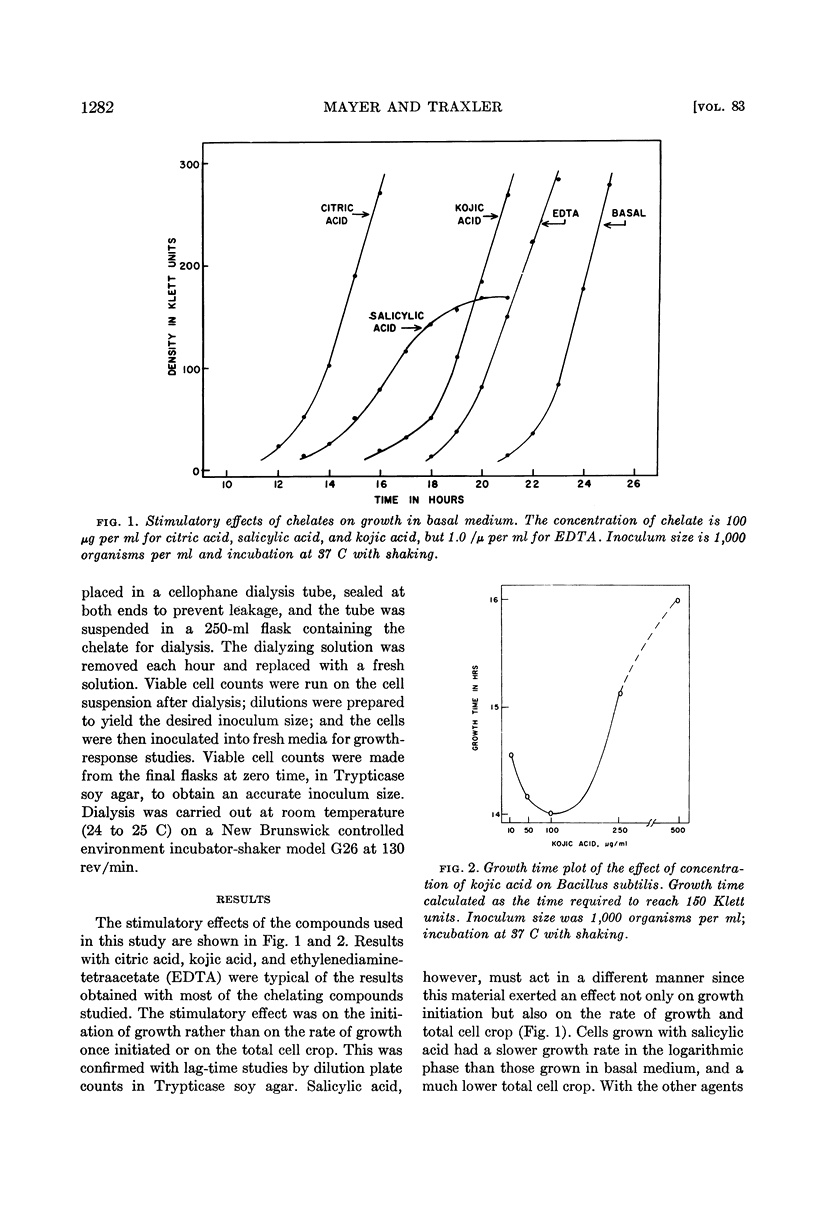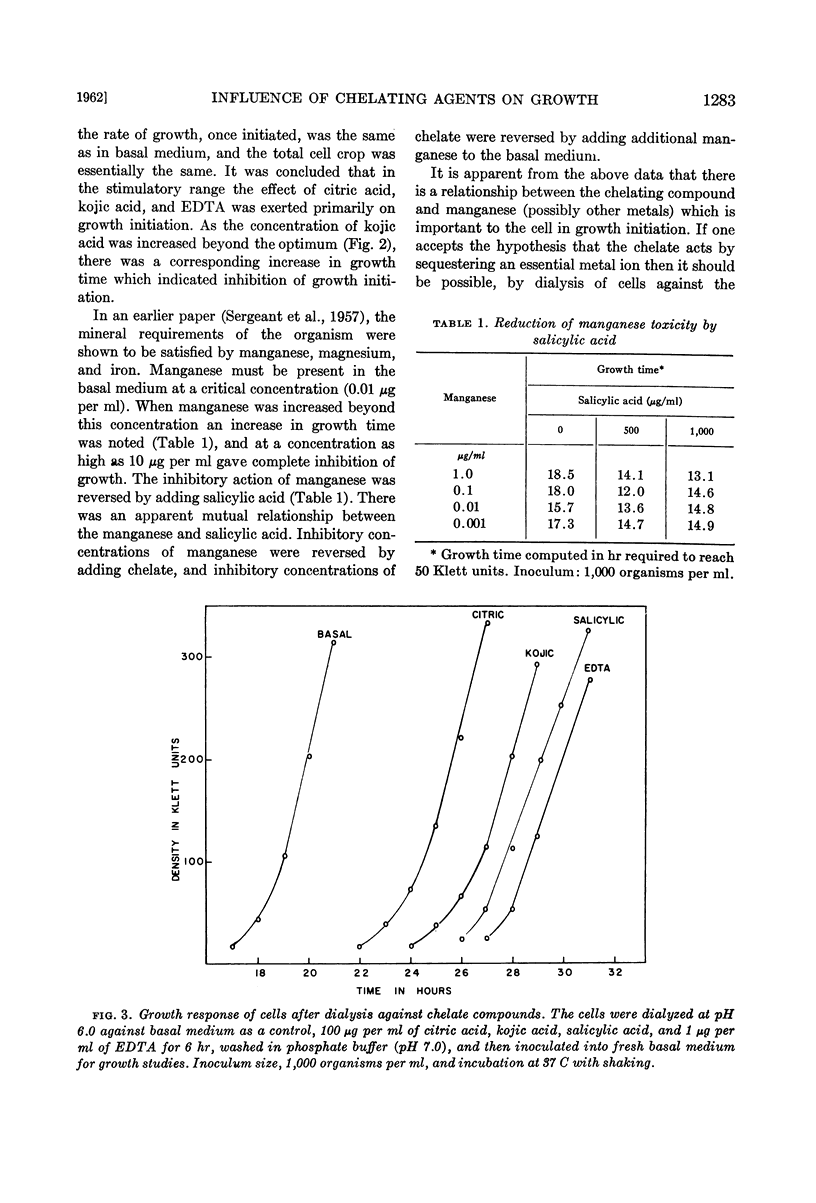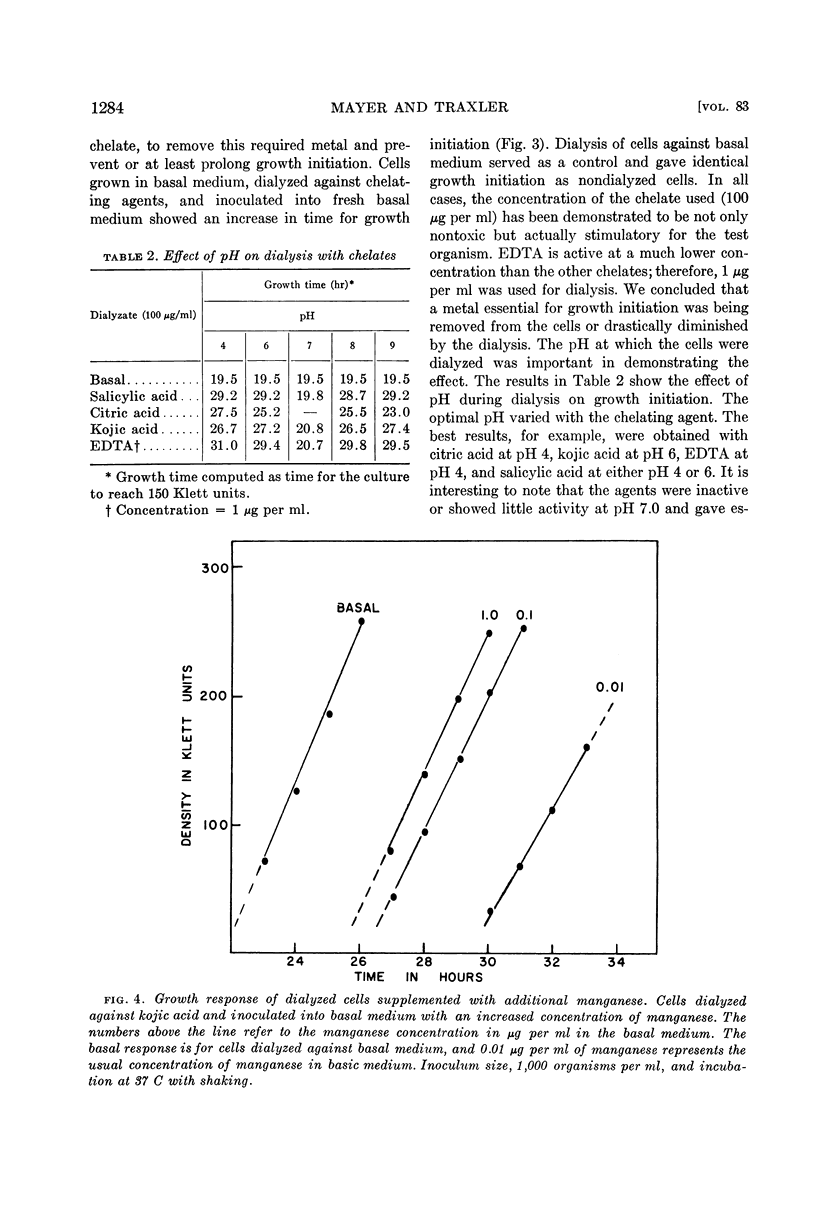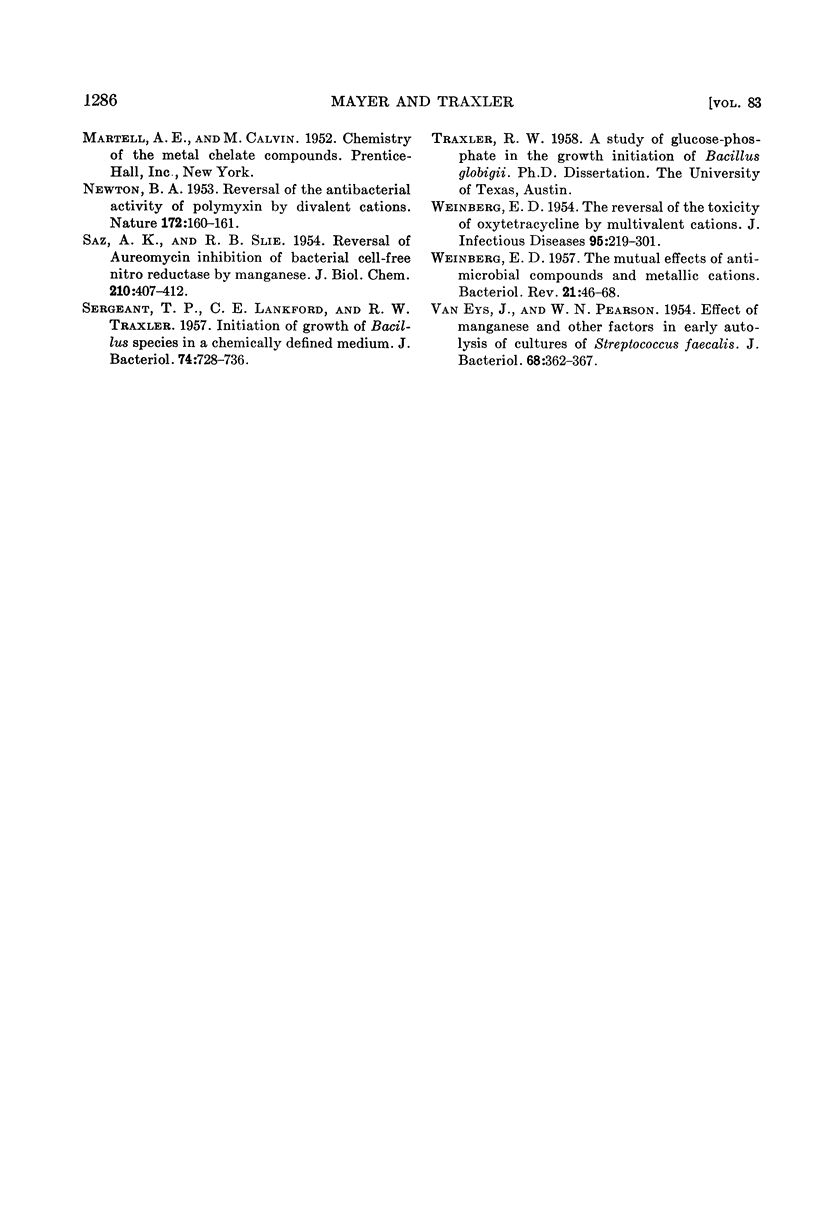Abstract
Mayer, Gerald D. (University of Southwestern Louisiana, Lafayette) and R. W. Traxler. Action of metal chelates on growth initiation of Bacillus subtilis. J. Bacteriol. 83:1281–1286. 1962.—Certain compounds which have a potential as metal chelates are stimulatory for Bacillus subtilis at low concentrations. If the concentration of these compounds is increased beyond the optimum for prompt growth initiation, they become inhibitory. It is demonstrated that this organism requires a critical concentration of manganese for growth initiation. If the manganese concentration is increased there is a corresponding increase in the lag time and, therefore, in the growth time of the culture. At a manganese concentration of 10 μg per ml growth is completely inhibited. The manganese inhibition can be reversed by the addition of a chelate.
Dialysis of cells with chelate presumably removes a metal ion(s) essential for the initiation of growth. Supplementing kojic acid-dialyzed cells with additional manganese reverses this inhibitory effect to some extent, indicating that the removal of manganese by the chelate dialysis is partially responsible for the increased time for growth initiation.
Full text
PDF





Selected References
These references are in PubMed. This may not be the complete list of references from this article.
- LANKFORD C. E., KUSTOFF T. Y., SERGEANT T. P. Chelating agents in growth initiation of Bacillus globigii. J Bacteriol. 1957 Dec;74(6):737–748. doi: 10.1128/jb.74.6.737-748.1957. [DOI] [PMC free article] [PubMed] [Google Scholar]
- NEWTON B. A. Reversal of the antibacterial activity of polymyxin by divalent cations. Nature. 1953 Jul 25;172(4369):160–161. [PubMed] [Google Scholar]
- SAZ A. K., SLIE R. B. Reversal of aureomycin inhibition of bacterial cell-free nitro reductase by manganese. J Biol Chem. 1954 Sep;210(1):407–412. [PubMed] [Google Scholar]
- SERGEANT T. P., LANKFORD C. E., TRAXLER R. W. Initiation of growth of Bacillus species in a chemically defined medium. J Bacteriol. 1957 Dec;74(6):728–736. doi: 10.1128/jb.74.6.728-736.1957. [DOI] [PMC free article] [PubMed] [Google Scholar]
- VAN EYS J., PEARSON W. N. Effect of manganese and other factors on early autolysis of cultures of Streptococcus faecalis. J Bacteriol. 1954 Sep;68(3):362–367. doi: 10.1128/jb.68.3.362-367.1954. [DOI] [PMC free article] [PubMed] [Google Scholar]
- WEINBERG E. D. The mutual effects of antimicrobial compounds and metallic cations. Bacteriol Rev. 1957 Mar;21(1):46–68. doi: 10.1128/br.21.1.46-68.1957. [DOI] [PMC free article] [PubMed] [Google Scholar]
- WEINBERG E. D. The reversal of the toxicity of oxytetracycline (terramycin) by multivalent cations. J Infect Dis. 1954 Nov-Dec;95(3):291–301. doi: 10.1093/infdis/95.3.291. [DOI] [PubMed] [Google Scholar]


